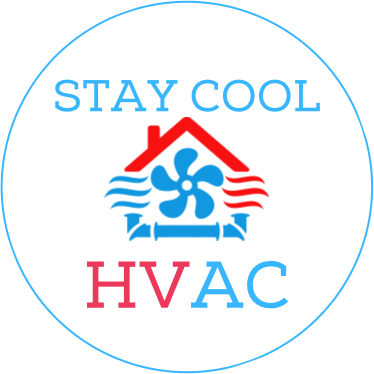In the article “Installing An Ac Unit”, you’ll be guided through the essential steps of setting up your own air conditioning unit. From the preparation phase to the actual execution, each stage is meticulously broken down to ensure a seamless installation experience, significantly reducing the potential for any temperamental issues that can occur with faulty setups. This indispensable guide empowers you to take the reins on your climate control, ensuring comfort throughout warmer periods.
Understanding AC Units
As you venture into the world of air conditioning, it’s important to understand the kind of AC units available and how they operate. Equipping yourself with this knowledge will assist you in choosing the right unit that caters to your specific needs.
Different types of AC units
There are typically three types of AC units: window units, split units, and central AC units. Window units are compact and meant for single-room cooling. Split units consist of an indoor and outdoor component and can cool one or more rooms. Central AC units, on the other hand, are designed to cool an entire house or building through a system of ducts and vents.
How do AC units work
AC units work by using refrigeration to lower the temperature. They draw warm air in, pass it over a set of cold coils which absorb the heat, and then release the cooled air back into your environment. This process continues until your desired temperature is reached.
Choosing the right AC unit for your needs
Choosing the right AC unit depends on a few factors such as the size of the area you need to cool, the layout of your space, climate, and budget. For small to mid-sized rooms, window units or split units can be ideal. However, for larger spaces or entire houses, a central AC unit may be more suitable.
Preparation for Installation
The next step is preparing for the installation. This involves safe practices, acquiring the right tools, and determining the best spot for your new AC unit.
Safety Measures
Before starting the installation, ensure that you turn off the electricity to avoid electrocution. It’s also essential to use the correct tools and wear protective gear like gloves and safety glasses.
Tools Needed for Installation
The tools you’ll need largely depend on the type of AC unit you’re installing. However, some basics include a drill, screwdriver, tape measure, level, pliers, and a utility knife.
Choosing the Correct Location for the AC Unit
The location of your AC unit greatly affects its efficiency. For window units, choose a window near a grounded electrical outlet that isn’t blocked by furniture or curtains. For central and split units, the indoor component should be placed away from heat sources and the outdoor component should be located in a shaded, well-ventilated area.

Click Here for Your HVAC Solution Estimate
Installing AC Window Units
Installing a window unit requires a bit of work, but with the right preparation, it’s a task you can accomplish.
Measuring and preparing the window
The window should be measured to ensure it can accommodate the AC unit. Make sure the window can support the weight of the unit and isn’t cracked or damaged.
Securing the AC unit in the window
Following the manufacturer’s instructions, secure the AC unit in the window. This usually involves sliding the unit into place, extending the side panels, and then using screws to fix the unit and panels to the window.
Sealing the window around the AC unit
Once secured, it’s essential to seal around the AC unit to prevent warm outdoor air from leaking into your cooled room. You can achieve this by using window sealing foam, caulk, or weather stripping.
Installing Split AC Units
Installing the indoor unit
The indoor unit should be installed on a wall at a height where it can distribute air evenly. It should be securely affixed using screws and brackets, ensuring the bracket itself is level.
Installing the outdoor unit
The outdoor unit should be positioned on a firm, level surface, preferably in a shaded area. It must also be installed in a location that allows for easy drainage.
Connecting the indoor and outdoor units
Now, connect the indoor and outdoor units following the manufacturer’s specific instructions. This typically involves routing refrigeration and electrical lines through a hole in the wall.

Installing Central AC Units
Installing a central AC unit is a complex task usually best left to professionals due to its degree of difficulty and the knowledge required to install it effectively.
Understanding central AC components
A central AC system consists of an indoor evaporator coil and an outdoor condenser unit. Additionally, you need ductwork throughout the structure to distribute cooled air.
Installing the indoor evaporator coil
The indoor evaporator coil is installed in the air handler or furnace. It’s carefully affixed within the unit to allow airflow through the coil.
Setting up the outdoor condenser unit
The outdoor condenser should be placed on a concrete slab and must be level. It’s important that it’s situated in a well-ventilated and shaded area.
Connecting the indoor and outdoor units
Once both components have been set up, connect them using refrigerant lines. The ductwork must then be connected to create a system for cooled air to circulate.
Electrical Connections
Understanding the electrical requirements of an AC unit
AC units typically require their circuit and breaker to accommodate their energy needs. It’s crucial to check the unit’s specifications or consult a professional to understand these needs.
Setting up the circuit breaker
A dedicated circuit breaker for the AC unit must be installed in the main service panel. This is to prevent overloading the electrical system.
Wiring the AC unit
It’s essential to wire the AC unit correctly. Most units have a specific wiring diagram in the instruction manual. Make sure all connections are secure and the power supply matches the specification of the unit.
Testing the electrical connections
Once the wiring is complete, test the connections. Switch the circuit breaker on and make sure the AC unit is operating smoothly.
Finishing the Installation
Inspecting the installation
Look over the installation to make sure all components are firmly in place, all connections are secure, and the unit is functioning as expected.
Testing the AC unit
Activate your AC unit and let it run for a while. Make sure it cycles on and off properly and that the temperature in the room decreases.
Understanding the AC control panel
Take time to learn how to operate your AC unit. Familiarize yourself with various settings and controls like temperature, fan speed, and timer.
AC Unit Maintenance
Routine Cleaning and Maintenance
Proper maintenance of your AC unit can help it last longer and make it more efficient. This includes cleaning or replacing filters, cleaning the evaporator and condenser coils, and checking the fan and compressor.
Troubleshooting Common Problems
Understand how to troubleshoot common AC problems, such as when the unit fails to switch on, leaks, or doesn’t cool effectively. Knowing when you can fix a problem yourself and when you need to call a professional can save you time and money.
When to call a professional
Call a professional if your AC unit isn’t working effectively despite troubleshooting or if it requires more complex maintenance like replacing components or deep-cleaning the system.
Energy Efficiency
Understanding energy efficiency ratings
Most AC units come with energy efficiency ratings called SEER (Seasonal Energy Efficiency Ratio) ratings. The higher the rating, the more efficient the unit is, which can save you money on energy bills in the long run.
Improving AC unit efficiency
Improving efficiency can involve cleaning and maintenance, using a programmable thermostat, using energy-efficient settings, and ensuring your home is well-insulated.
Reducing energy costs with your AC unit
Regular maintenance, using the appropriate settings, and only running your AC unit when necessary can help reduce energy costs.
Cost Considerations
Considering installation costs
Installation costs can vary based on the type of AC unit and the complexity of the installation. It’s important to consider these costs when budgeting for a new AC unit.
Potential Additional Costs
Additional costs might include regular maintenance, replacement parts, and increased energy bills if the unit isn’t energy efficient.
Long-term operating costs
Consider the long-term operating costs of the AC unit. Energy-efficient models may cost more upfront but save money in the long run. Regular maintenance can also help prolong the life of your unit, reducing overall expenses.

